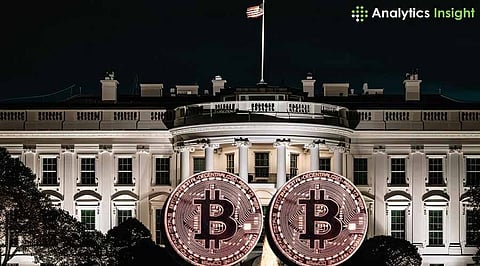

In March 2025, America’s approach to cryptocurrency took a decisive turn. The Trump administration introduced bold policies poised to reshape the nation's financial framework and echo across global crypto markets. How will these moves redefine the future of digital finance? Let’s take a closer look.
Here are five pivotal actions the White House took in March, and why they could shape the future of digital finance.
On March 6, President Trump signed an executive order creating the Strategic Bitcoin Reserve, elevating Bitcoin from a mere investment to a cornerstone of America’s strategic reserves, regarded with the same gravity as gold or oil.
This reserve isn’t built on taxpayer dollars. Instead, it holds around 200,000 bitcoins, valued at roughly $17 billion, acquired through law enforcement asset seizures. And here’s the kicker: these assets are off-limits for sale. The government’s message is simple: Bitcoin is a long-term asset for national strength.
Why does this matter? No longer confined to tech enthusiasts, Bitcoin is stepping up as a financial asset with the potential to shield national interests. This move might even encourage broader institutional adoption and change how other countries approach digital reserves.
Bitcoin isn’t the lone contender. The White House also introduced the U.S. Digital Asset Stockpile, amassing other seized digital currencies like Ethereum, XRP, Solana, and Cardano. It’s a diversified collection of top cryptocurrencies that could give the U.S. financial flexibility in the future.
But this isn’t a crypto shopping spree. The government is clear; it won't buy more or speculate. These assets came through forfeitures, and the focus is now on responsible management. Some may be held for strategic reasons, and others could be sold to bolster government resources.
This is a calculated move. It adds depth to America’s crypto approach while keeping risk in check.
Actions speak louder than words, but dialogue still matters. That’s why the White House Crypto Summit on March 7 was so important. It wasn’t just about speeches. It was about bringing together the brightest minds in crypto, from innovators to regulators, to discuss the future of digital assets.
President Trump made one thing clear: America is open for crypto business. While no sweeping regulatory plans were revealed, the tone was set for collaboration and progress. It was a call to the industry; America wants innovation, but it also wants smart, clear rules.
The summit wasn’t just symbolic. It showed the administration’s willingness to learn from experts and shape policies that make sense for the long haul.
Leadership in uncharted territory is everything. Enter David O. Sacks, the new White House AI and Crypto Czar. Sacks is no stranger to Silicon Valley success, and now he’s steering the nation’s digital asset policy.
His mission is simple but tough: create a legal framework that fuels innovation but doesn’t leave investors or the economy vulnerable. With crypto’s potential and risks both growing, having someone who understands the landscape is crucial.
Sacks' role is a game-changer. It means crypto policy isn’t just being drafted behind closed doors; it’s being shaped by someone who understands the industry's pulse and potential pitfalls.
In January, the White House scrapped outdated crypto policies by signing Executive Order 14178. The message? It's time for fresh thinking. This order revoked older frameworks that were seen as barriers to growth and innovation.
One of the boldest steps? The outright ban on a U.S. Central Bank Digital Currency (CBDC). The Trump administration is betting on decentralized assets rather than centralized digital control. The focus is now on crafting a balanced regulatory framework within 180 days, one that encourages growth while protecting against risks.
This is about more than rewriting rules. It’s about building a system that matches crypto’s rapid evolution.
This isn’t political theater. It’s a real shift in how the U.S. treats digital assets.
For investors, it signals a friendlier landscape where clarity and opportunity can thrive.
For innovators, it opens the door to pushing boundaries without fearing regulatory whiplash.
For the global market, it’s a sign that America wants to lead, not follow, in the digital economy.
March 2025 wasn’t just about policy changes; it was about setting a vision. One where the U.S. isn’t just part of the crypto conversation but shaping it. The world is watching. And so is every crypto investor.
